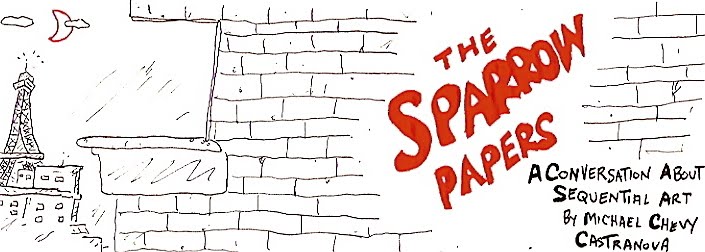 I’m reminded of that Albert Einstein quote that I think is often misapplied: “Imagination is more important than knowledge.” Ad agencies tout it as a corporate motto for being clever. But while it’s true imagination can be the spark that generates great ideas, without knowledge you’re just playing with soggy matches.
I’m reminded of that Albert Einstein quote that I think is often misapplied: “Imagination is more important than knowledge.” Ad agencies tout it as a corporate motto for being clever. But while it’s true imagination can be the spark that generates great ideas, without knowledge you’re just playing with soggy matches. In sequential art, we can see a direct line of informed artists building upon the work of their predecessors, to which they blend in their own imagination. See what I mean: Hugo Pratt (Corto Maltese is his internationally known protagonist) acknowledged his debt to comic-strip predecessors Noel Sickles (Scorchy Smith) and Milton Caniff (Terry and the Pirates and Steve Canyon). As Jaime Hernandez moved from very detailed illustrations to more impressionistic work in Love & Rockets, his heavy inks began to resemble Pratt’s — which of course in turn evoked the chiaroscuro of Caniff. And when Jessica Abel (La Perdida) visited Kalamazoo, Michigan, last week, she cited Hernandez as an early inspiration for her work.
So we can draw a link from Sickles and Caniff (starting in the 1930s) through Pratt (1970s to 1990s) to Hernandez (1980s up to today) to Abel (2000 and still going), to name just a few practitioners.
Another would be Frank Miller. (Now there’s a man who loves chiaroscuro — look at Sin City.) In his introduction to The Dark Knight Returns (1986), Miller writes that the notion to make his version of Robin a girl came from Love & Rockets.
And as readers of that dark, grim series also will recall, political and military tension mounts between the United States and the Soviet Union over the island of Corto Maltese ….

No comments:
Post a Comment